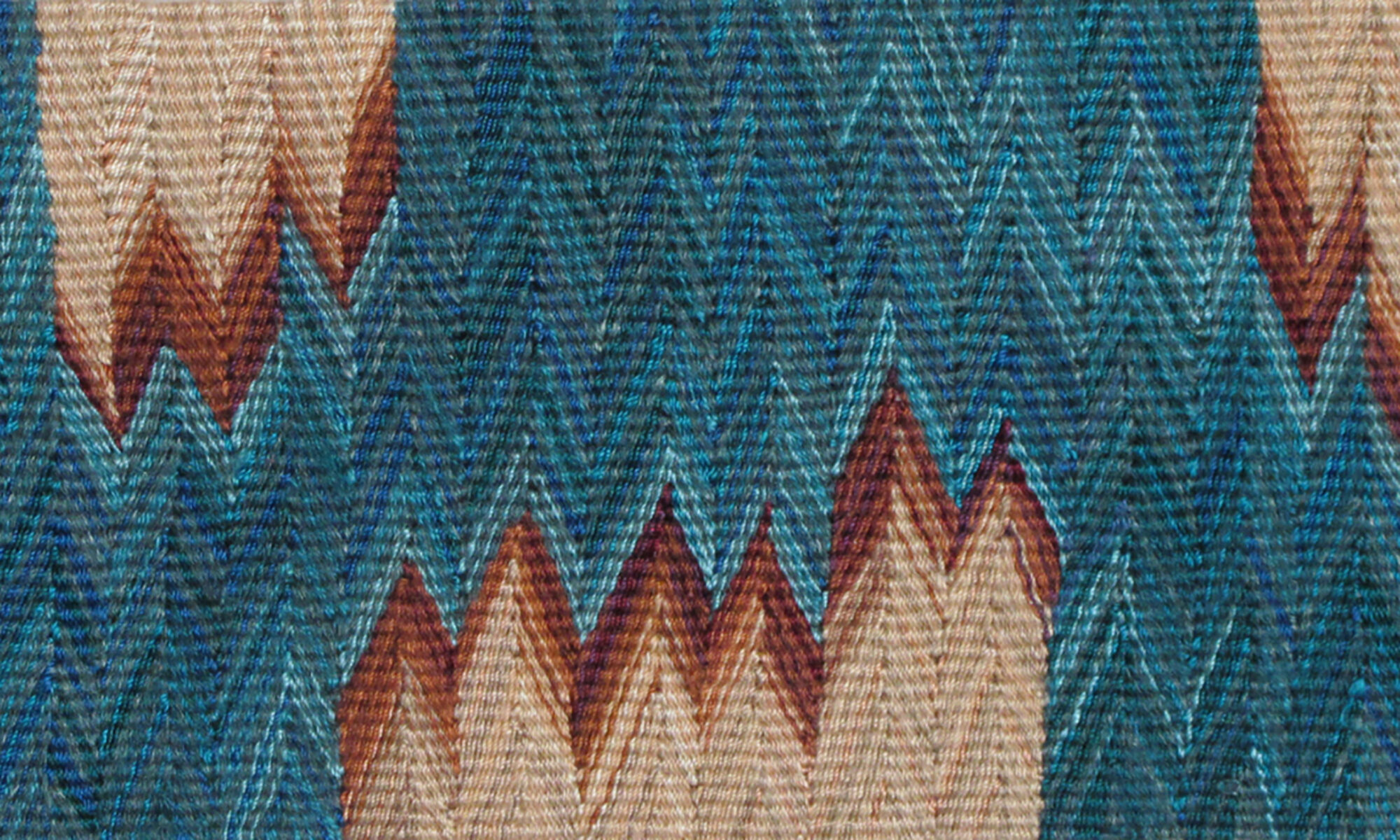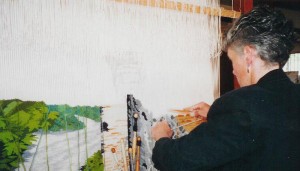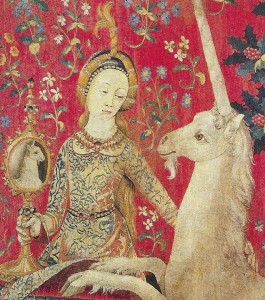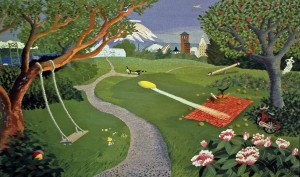Tapestry is a form of weaving, the interlacement of two sets of threads. The vertical threads, called the warp, stretch between two beams on a loom and the horizontal threads, the weft, pass in a perpendicular manner through the warp.
Most tapestry is plain weave, the simplest form of weaving. The weft passes over, then under, over, then under the warp threads as it travels back and forth across the loom.
In tapestry the spacing of the warp and the thickness of the weft produce a fabric in which the weft packs down to cover the warp. This kind of fabric is referred to as weft faced. The thickness and density of a weft faced fabric is particularly well suited for wall hangings.
The image in a tapestry arises as the fabric is woven, pass by pass. It is not stitched or printed onto the fabric. The construction of the fabric and the development of the image occur simultaneously.
It is the simplicity of plain weave that gives tapestry its great potential as an artistic medium. The tapestry weaver inserts the variously colored weft threads in the manner that he or she feels best suits the design. All true tapestry is hand woven. It is the only form of weaving that has never been mechanized.
Cave paintings document tapestry weaving as far back as 3000 B.C. Through this long history tapestry developed many regional styles but it is, perhaps, the great tapestries woven during the Middle Ages in Europe that are most familiar. These vast hangings adorned large stone castles, providing both sound and temperature insulation and a lively mural for the windowless walls. Tapestry served as a chronicle of the times, relating stories of history and mythology and celebrating the lives of both the nobility and the common people. Today these tapestries hang in museums and their size and numbers speak to the enormous value placed upon tapestry.
Today tapestry is experiencing a renaissance as many artists choose this rich and supple medium for their own means of expression. Tapestry is also finding its place in modern architecture, whose scale and materials are perfectly complemented by the warmth and lively spirit of a textile.




